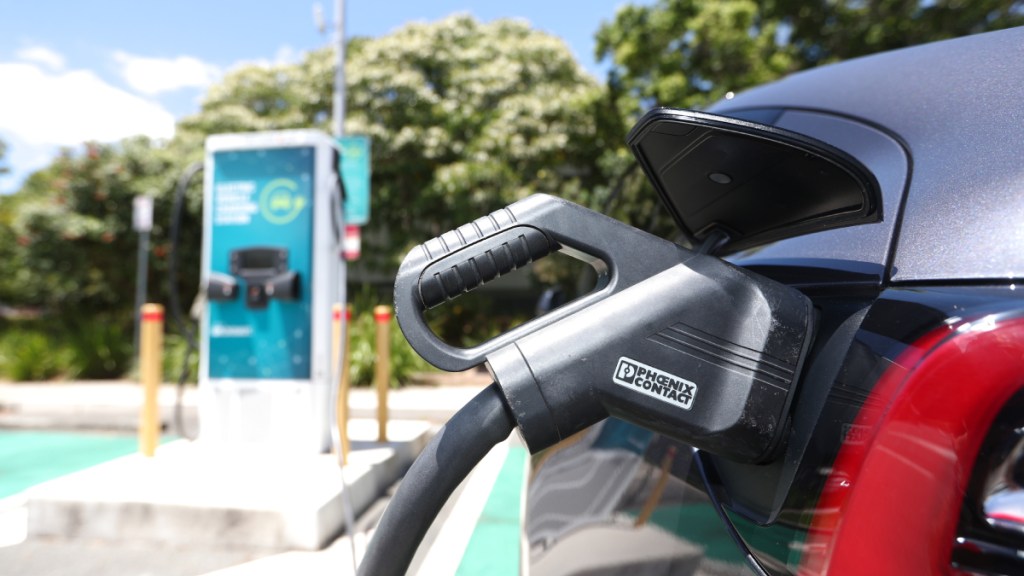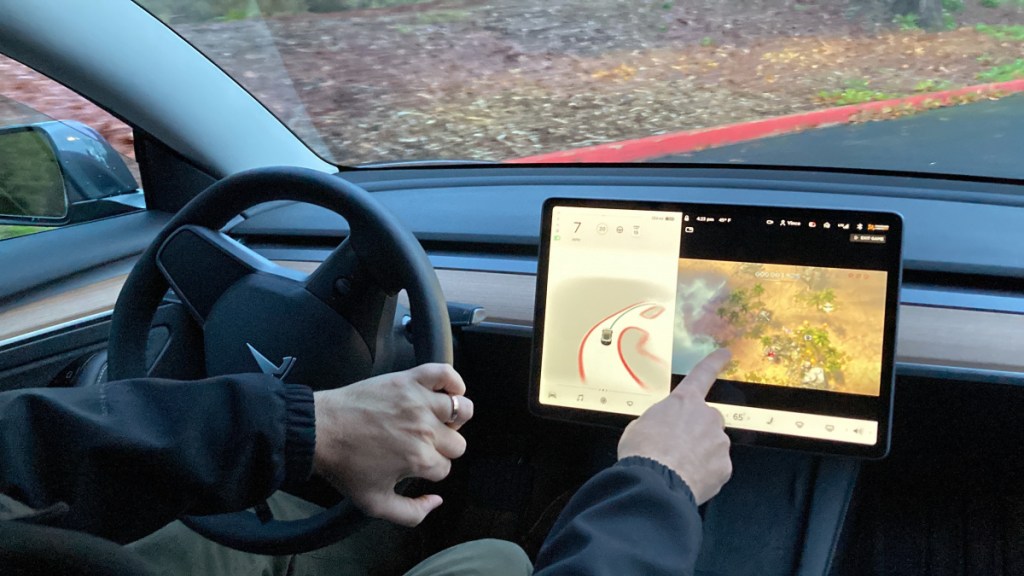Extract from The New Daily

Electric cars are getting cheaper and more reliable. Photo: Getty
Australians could save hundreds of dollars when taking road trips by changing to either fuel-efficient or electric vehicles, according to new analysis.
The Climate Council’s analysis showed that travellers on popular holiday routes in Sydney, Melbourne, Brisbane and Canberra can save between $167 and $293 in an EV, or between $127 and $225 in a more fuel-efficient petrol car.
Dr Jennifer Rayner, head of advocacy at the Climate Council, said the results show that EVs result in extensive savings for consumers.
“Those savings can be as high as $167 for people making popular trips out of Sydney and the savings are even bigger if you are coming from Melbourne, with average savings of around $297,” she said.
“That really serves to show that when people choose a lower or zero-emissions vehicle, they can cut their petrol bills.”
EV sales in Australia doubled in 2023 after 87,217 vehicles were sold throughout the year, according to the Federal Chamber of Automotive Industries.
How’s the road trip?
Bryce Gaton, founder of EVchoice, has taken numerous road trips in electric vehicles.
He said it is becoming easier to traverse Australia as charging networks and infrastructure become more common.
“In 2019, I did my first trip up to Sydney full electric and the last EV DC charger between Melbourne and Sydney was in Albury,” he said.
“I did another trip not too long ago and I could skip every second or third charger and I only needed to make two or three stops along the way.”

Charging infrastructure has expanded between 2019 and 2024. Photo: Getty
Gaton said that even if using the most expensive charging options — and completely avoiding charging at home — driving an EV will save the average person about 70 per cent on fuel.
“If you run on the most expensive charging option, you are still saving 46 per cent,” he said.
“We’ve got 60-odd models of passenger cars now available and there are 10 commercials available.”
Both Rayner and Gaton agree that one major roadblock is the implementation of fuel efficiency standards to encourage manufacturers to ship vehicles to Australia.
“We don’t have access to these cheap, clean, low- and zero-emissions vehicles and it is costing Australians money,” Rayner said.
“Fuel efficiency standards are in place in about 85 per cent of the world’s car markets, but we don’t have them here in Australia.”
Fuel efficiency standards
The standards, currently being mulled over by the federal government, would create a maximum level of carbon emissions for cars sold in Australia, forcing manufacturers to offer low-emissions vehicles.
Gaton said companies overseas make more money selling low-emission and electric vehicles because of efficiency standards offering rebates for sales.
“The manufacturer says ‘We can make an extra $20,000 selling this same vehicle overseas, why would we sell it in Australia?’” he said.
“They bring out a few to put a toe in the water and show them off for a bit of brand recognition.”
According to the Climate Council, European markets have about 200 EV choices, compared to just 50 in Australia.

Australians have fewer options in the EV and low-emission vehicle market compared to overseas. Photo: AP
The federal government promised to design Australia’s standards in April 2023, but the details of what it will contain are unknown.
Rayner said although it is taking a long time, she hopes it will unlock more supply.
“If we’d had it last year, there could be more Aussies who were able to make their summer road trip in a lower-emissions vehicle,” she said.
“We just don’t have the diversity of cars or access that people in other markets can already buy.”
No comments:
Post a Comment